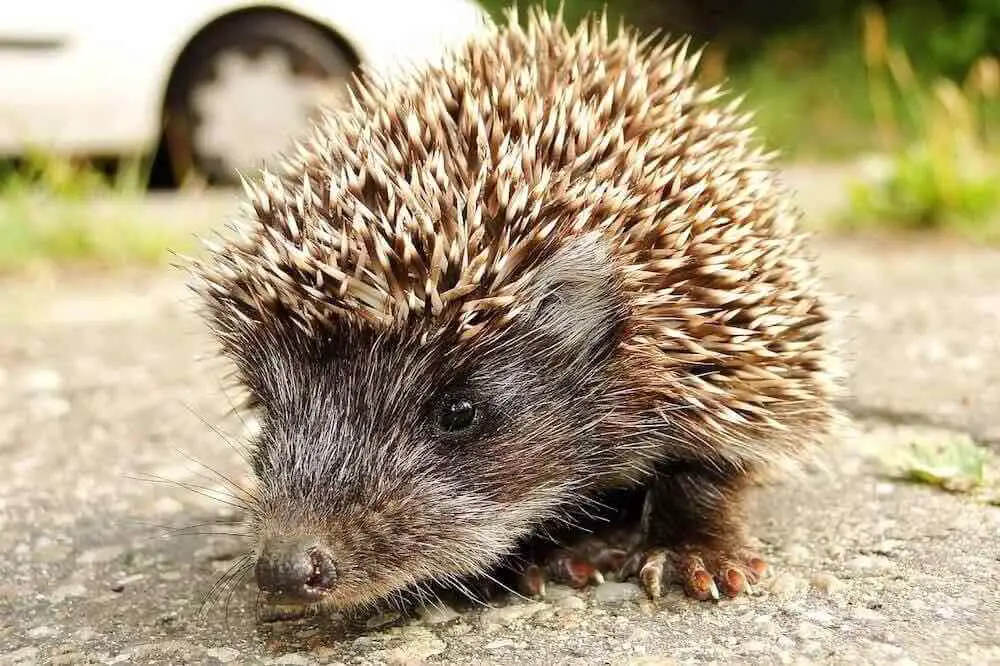
Hedgehogs are in decline, certainly throughout the United Kingdom. There are a number of threats to hedgehogs, some more obvious and some less so. I wanted to provide some useful information about this, and what we can do to save them.
So what are the major threats to hedgehogs? Threats to hedgehogs come from finding it difficult to hunt for food in urban areas, as well as from gardening equipment, poisons and pesticides, ponds and swimming pools, animal traps and other animals such as badgers and owls that prey on them. Bonfires and compost heaps are also dangerous places.
As you can see, that’s quite the list already. I’ve expanded on this below, and given some ideas on how to protect hedgehogs from some of the threats they face today. Read on to find out more.
Contents
Threats To Hedgehogs
It is no exaggeration to say that hedgehog numbers are a very serious concern. They are in huge decline, especially in the United Kingdom, where we are still lucky enough to have hedgehogs.
There are large parts of the world, such as North America, where they do not even hedgehogs at all. Here I am talking specifically about wild hedgehogs. There is a growing trend for people to keep hedgehogs as pets. These are normally hedgehogs knows as African Pygmy Hedgehogs.
So what would we class as the major threats to hedgehogs? They come in all shapes and sizes, from changing environments, to natural predators and man made threats such as cars and garden tools!
In this post I am really talking about the threats to hedgehogs we normally see in and around our gardens. There are actually 18 different types of hedgehogs, and I have written in more detail about them here.
1. Changes To Living Environment
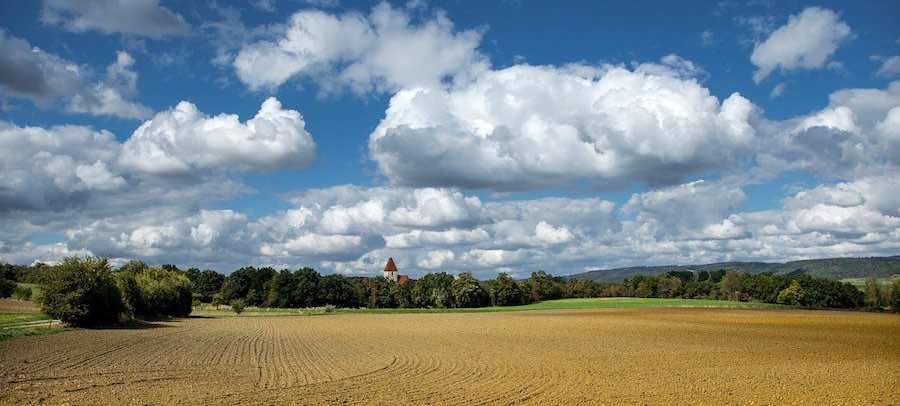
I will talk in some more detail below about the decline in hedgehog numbers over the years, which I said makes for worrying reading. One of the the biggest threats to hedgehogs is probably one that doesn’t readily spring to mind.
When I think about what could put a hedgehog in danger, I think about other animals, possibly cars on roads, and things that could poison a hedgehog. These are all real hedgehog killers, but most of them can be traced back to the changing environment that a hedgehog lives in.
If you think in the most basic terms about the name hedgehog, the name comes from the kind of places that a hedgehog likes to hang out! As the name suggest, hedges and areas of forestation are among the hedgehogs natural habitat.
Hedgehogs are solitary creatures that tend to live and roam for food in places full of hedges, thick bushes and trees. They have an excellent sense of smell, and will rely on this and their sense of touch to find most of their food.
If we then think about developed countries such as the UK, over the course of time these countries have become more and more developed, and more urbanised. There are less areas that we would probably class as wild, full of hedges and forests.
More and more of these areas are being used to build housing estates, shops and other businesses such as factories. It has been this way for some time now, and this ever changing landscape coincides with the decline of hedgehog numbers, certainly in the UK.
Farmland and the nature of farming have both changed over the years too. This has also had an impact on the available areas for hedgehogs to live.
As more of the farmland is used and less and less undisturbed, hedgehogs often move further afield. As more land is farmed, there is less food available for hedgehogs to find.
An increase in farming machinery and the use of pesticides, which I will talk more about below both have an impact on the hedgehogs ability to use farmland as a safe place to stay.
2. Changes To Gardens
When I was researching for this post, I just found that each of the threats to hedgehogs seems to lead on to another one.
With areas becoming more urbanised, and places like farmlands providing less safety for hedgehogs, they move towards staying more and more in and around residential areas, specifically in gardens.
Now many gardens actually are safe havens for hedgehogs. Many are full of hedges and wooded areas that provide food and shelter for hedgehogs.
Some people even buy or build hog houses for hedgehogs to stay in, providing them with food and shelter. Hedgehogs are fairly friendly creatures really, and are quite safe for humans to be around.
However, the changing of landscapes, certainly in the UK today can also be seen in how people design and change their gardens.
There is a growing trend towards having wooden decking areas, and lots of patios and concrete areas in gardens. These are easier to maintain, and can be home to the ever growing trend of hot tubs owned by people today.
What this does mean for hedgehogs however, is that there are less and less places in some of the gardens for them to both build nests and find food.
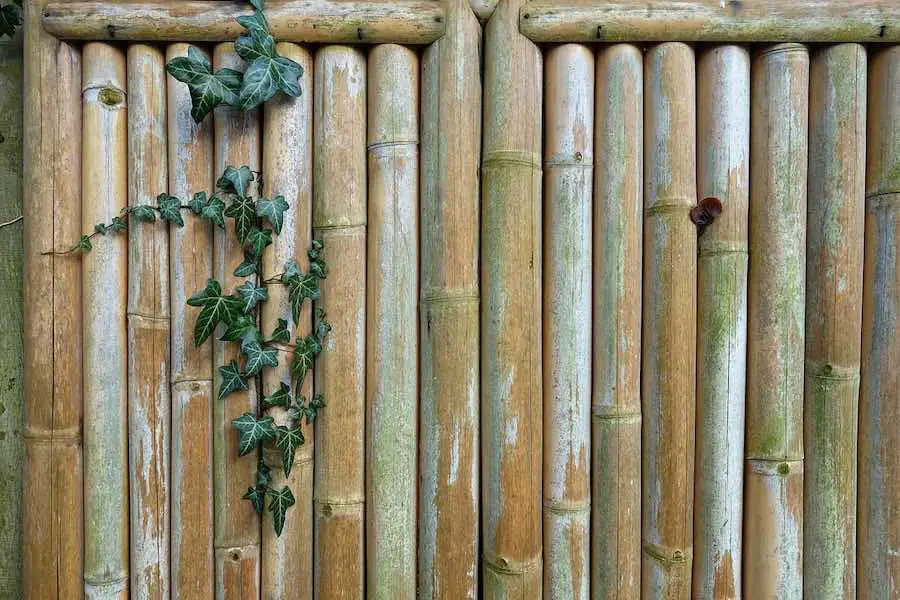
It does seem like fewer people use hedges these days to mark the boundaries between their gardens and those next door. For starters, this takes away one of the places that hedgehogs like to build nests and find food.
Another major problems here is that with a move towards fencing off gardens, hedgehogs can find it difficult or impossible to move between gardens. This is something they do each night in search of food, often wandering up to 2 miles a night.
3. Ponds And Swimming Pools Are Dangerous for Hedgehogs
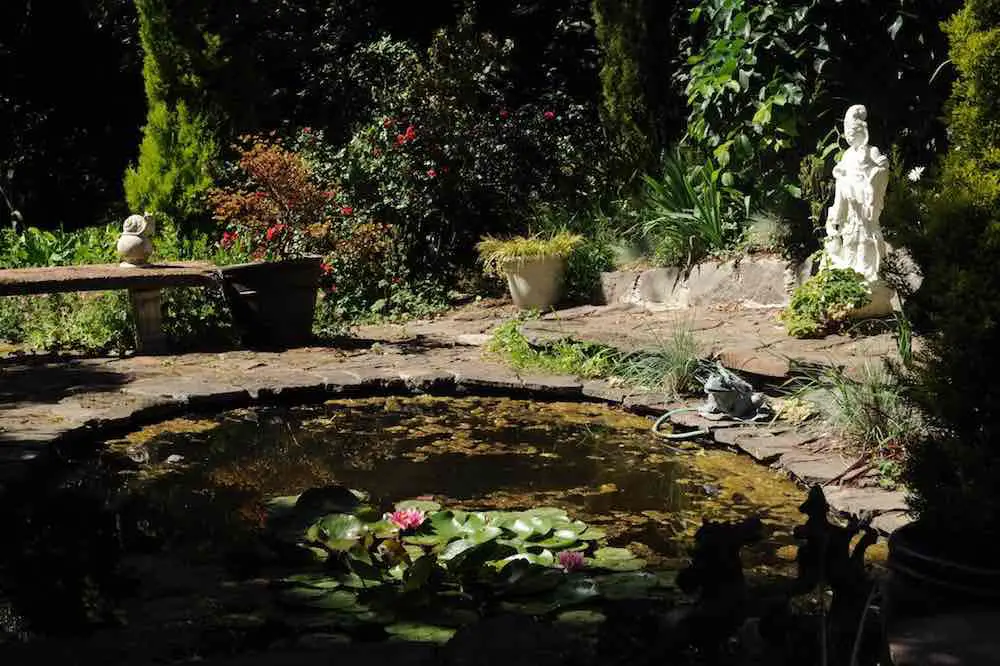
There is no way to talk about the threats to hedgehogs without talking about ponds and swimming pools in back gardens. Now it is probably a little known fact that hedgehogs can swim! In fact they are actually pretty good swimmers.
They can and will swim across water to get to food. Often ponds are great places for hedgehogs to find a number of the bugs that they like to eat. The major problem arises for hedgehogs when they either climb into a pond or swimming pool, and can’t get back out.
Unless there are things for them to climb onto, or shallow slopes, they will not be able to get out. Now as I said, they are good swimmers. However, they are small creatures, with short limbs, and they will get tired quickly.
They can stay afloat using the thousands of quills they have on their bodes. These are filled with chambers of air to keep them afloat. They can, however, only stay in the water for so long before they end up drowning.
4. Garden Tools Can Kill Hedgehogs
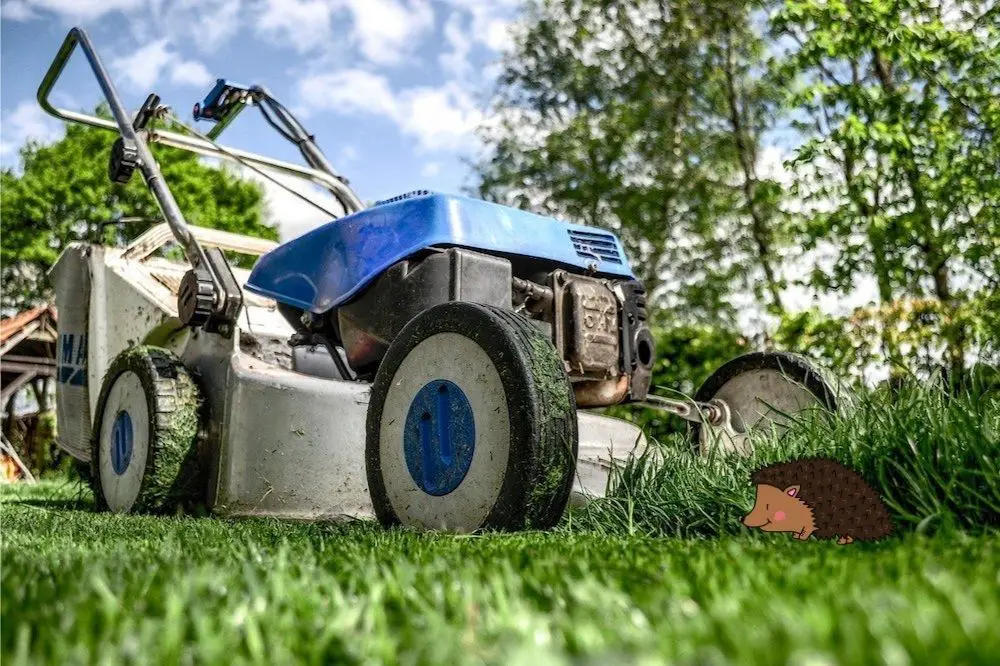
Another of the threats to hedgehogs in gardens comes in the form of motorised gardening equipment. The use of lawnmowers, strimmers and chainsaws can all pose a threat to both a hedgehogs life and living environment.
First off, if you do not check areas that you are using these on, you could very well kill a sleeping hedgehog without even knowing it is there. There is also the issue of cutting away and removing too much of the kind of habitat that a hedgehog both lives in and looks for food in.
5. Poisons And Pesticides Will Kill Hedgehogs

Another of the major threats to hedgehogs, and one that kills many is the use of poisons and pesticides. Attracting animals such as rats can be a big worry if you feed animals like hedgehogs.
If people have animals such as rats visiting their garden, they are often tempted to use rat poison to deter them. This is all well and good, but these can and will also kill hedgehogs. There is a good chance they may try to eat them, and if this is the case it will kill them.
Another major problem with rat poison is that insects such as slugs will eat them. This can and will have a disastrous effect on hedgehogs. Once inside the slugs, hedgehogs can then eat the slugs, which in turn means that they have inadvertently eaten rat poison.
The same can be said with using things like slug pellets. These are also harmful to hedgehogs, and they can easily eat a slug that has ingested these without knowing.
6. Traps For Rats And Other Animals Can Also Kill Hedgehogs
Another of the garden threats to hedgehogs is the use of traps to catch unwanted visitors. Whilst designed to catch animals such as rats, these can also easily catch hedgehogs too.
If there are a lot of unwanted visitors like rats to your garden, and you feel you need to set traps, you can use more humane traps that don’t harm them.
7. Compost Heaps Can Be Dangerous Places For Hedgehogs

Many people keep compost heaps in their gardens these days. Often you will find that hedgehogs have built a place to stay either in or around one of these. They can provide a safe place for them to stay, and an excellent place to find all kinds of food.
The problem is that not many people will notice them, or even think about the fact that they could be inside a compost heap. Before you know it you have turned over the compost with a pitch fork and inadvertently stabbed a hedgehog that thinks it is tucked away safe inside.
8. Netting Can cause Hedgehogs To Become Tangled
The use of netting in gardens is also one of the threats to hedgehogs that you probably haven’t even thought of. Nets can often be used to protect plants from bugs and other garden creatures.
These are hazardous to hedgehogs, as they can easily become tangled in them and if they can’t get free, they will eventually die. I see a huge increase in goal posts in gardens these days too. The nets used for these can also be hazardous to hedgehogs.
9. Hedgehogs Will Hide In Bonfires And Can Be Burned Alive

This one makes me really sad. Many people build bonfires in their gardens these days, either for bonfire night, or just to burn unwanted garden waste. The major problem here is that bonfires actually make amazing places for hedgehogs to both stay and find food.
They provide camouflage and protection for hibernating hedgehogs, and can also be a great place for them to find all of the foods that they love.
If you have a hedgehog in your bonfire, the chances are you will have no idea, as they will be virtually impossible to spot. Try to build them in such a way that you can check carefully before setting them on fire.
10. Rubbish Can Choke And Trap Hedgehogs
Leaving litter in your garden and the surrounding areas can also be on of the major threats to hedgehogs too.
As well as a choking hazard if they chose to eat small items lying around, there is also the chance that similar to the problems with nets, hedgehogs can become entangled and stuck in larger items of rubbish
Things like open cans and pots will invite a hedgehog in due to the smell of food, and once in they might not be able to get back out.
11. Roads And Vehicles Pose A Major Threat To Hedgehogs
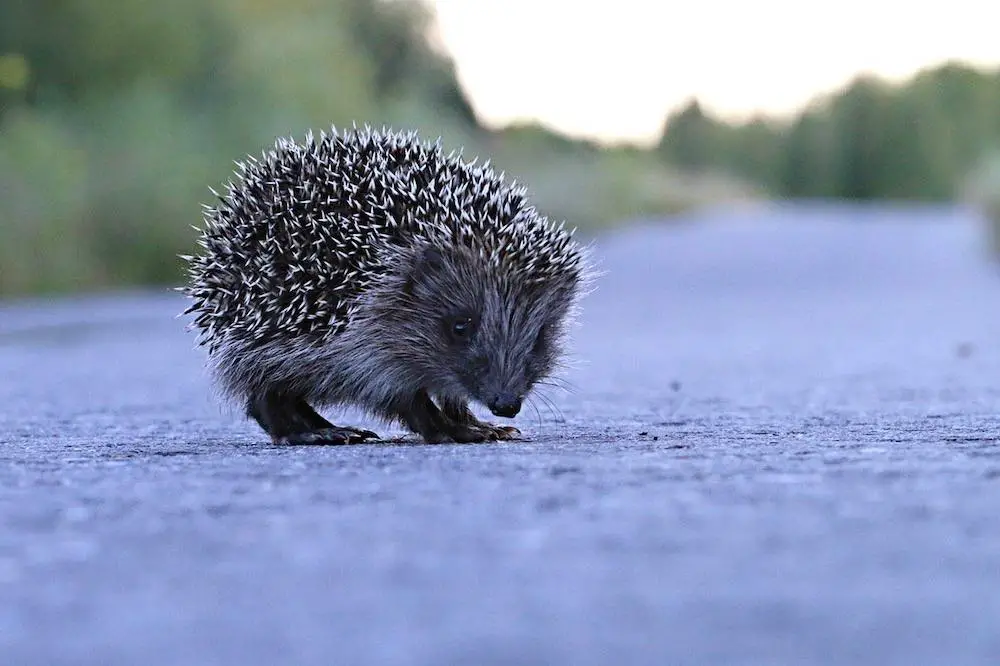
Now how many times have you been out walking and seen a flattened hedgehog in the middle of the road? I have seen this a lot, and there is no doubt that roads and vehicles pose major threats to hedgehogs.
This really takes us back to my original point about the changing landscape of the countryside for hedgehogs. Many times places where hedgehogs were once safe to live have had roads built through them.
The need for hedgehogs to move into more urban areas has also moved them closer to major roads. I mentioned the building of fences earlier as being a problem for hedgehogs. If they can’t skip between gardens, they will need to find ways around this.
This could mean that we see them crossing roads more and more in search of food. As they are not hugely fast runners, it can be very hard for them to move out of the way of oncoming traffic. With their less than amazing eyesight they also won’t really see them coming.
12. Feeding Hedgehogs The Wrong Foods Can Kill them
Feeding hedgehogs in your garden is a really great thing to do. However it is possible to get this wrong, and when you do unfortunately it becomes another one of those threats to hedgehogs. Hedgehogs need a diet that is high in protein and lower in fat.
They will mostly eat bugs around your garden, such as beetles, slugs and worms to name a few. They will also feed on any fruit and vegetables that they find lying around.
There are, however, some things that we should not feed hedgehogs. For starters, they are lactose intolerant, so they should not be given milk or other dairy products.
Hedgehogs also can’t eat pumpkin and some other fruits and vegetables. Pumpkins are bad for a hedgehogs stomach, and can cause bloating and diarrhoea if they have too much. This is not good for an animal that needs to build up the nutrients it needs to survive hibernation.
If you want to leave something out for a hedgehog, you could leave out cat food, or even special hedgehog food. If you leave out cat food, make sure that it is of the dry variety, and also high in protein. Hedgehogs will also eat rice, so you could supplement it with this.
13. Animals That Kill Hedgehogs
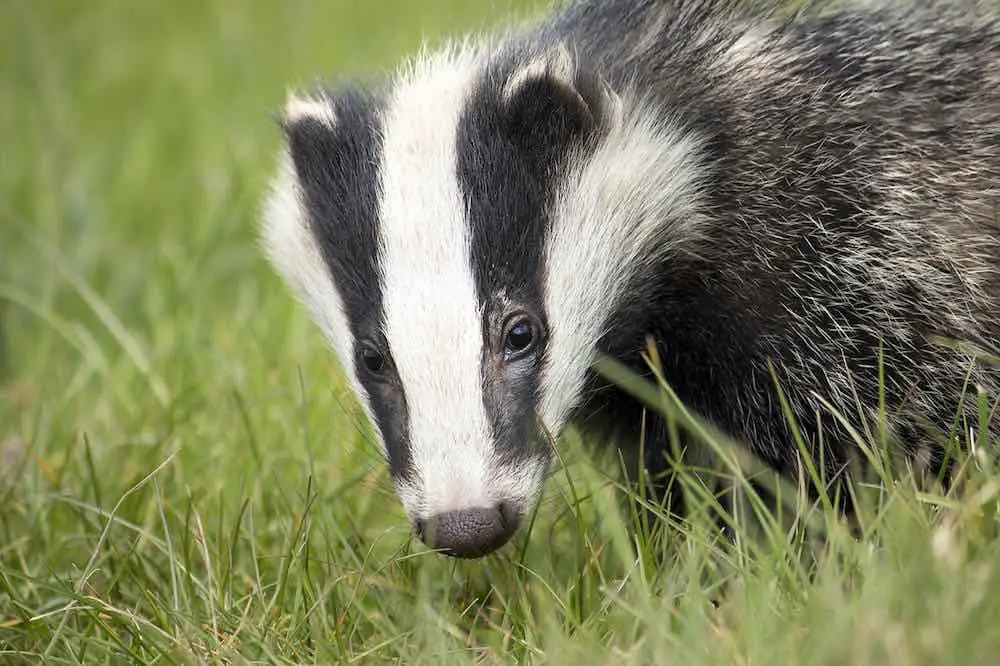
I’ve left this one right to the end, as it is really one of the only natural threats to hedgehogs that I could think of. It is quite removed from the other man made threats that I found when researching.
There are several animals that may prey on hedgehogs, so they need to have their wits about them to make sure they survive. There are obviously several different types of hedgehogs, and they can fall prey to a variety of different animals.
Hedgehogs that live in more forest like areas can often be attacked and killed by various birds, such as owls and even eagles in some places.
The kind of hedgehogs we find in our garden are more likely to be attacked by badgers, foxes and mongooses.
Adult hedgehogs are normally fairly well protected against foxes due to the thousands of quills on their body, but baby hedgehogs, or hoglets, can be easy prey for foxes.
Badgers are really the biggest of the animal threats to hedgehogs. Badgers have very thick skin, and coupled with their extremely strong claws this makes them more than capable of killing and eating a hedgehog.
The Decline In Numbers Of Hedgehogs
I’ve done a little bit of research into the decline of hedgehogs, certainly in the United Kingdom. It doesn’t make for very good reading if you are a hedgehog lover.
Now I’m talking here more specifically about the numbers of hedgehogs living in the wild, rather than those living in captivity as pets. I took some statistic from this report by the BBC about the numbers of hedgehogs in the past and the present day:
There are currently roughly 1 million hedgehogs living in the wild today, in comparison to roughly 30 million hedgehogs in the 1950s.
As you can see, that’s a huge decline in the hedgehog population. All of the above threats to hedgehogs have most certainly contributed to this rapid decline!
What Can We Do To Help Hedgehogs?
So what can we do to help hedgehogs and keep them safe from harm? In response to the number of hedgehog threats I went into detail about above, below are some of my ideas to keep them safe in and around your garden:
- Leave small holes in the bottom of fences to allow hedgehogs to pass safely between gardens.
- Ensure your entire garden is not paved or decked. Leaving some areas with hedges or bushes will help hedgehogs to stay safe and find food.
- Cover ponds or pools over, or make sure there are ramps or special hedgehog ladders for them to climb out of. This will stop them from drowning.
- If you are using garden tools such as strimmers or lawn mowers make sure you check the areas you are using them in for hedgehogs first.
- Don’t use any poisons or pesticides to try to get rid of other animals such as rats, or insects such as slugs. This can and will kill hedgehogs.
- Avoid using traps for animals such as rats that are deigned to kill. Instead use humane traps that allow you to release animals safely.
- If you have a compost heap make sure you check for hedgehogs before you dig this over.
- Any netting in your garden should be around 30cm from the ground to stop hedgehogs getting tangled in them.
- Bonfires should be checked carefully for hedgehogs before they are set on fire. Try to build them in such a way that you can check for this beforehand.
- Clear up any rubbish and make sure that bins are securely closed.
- Only feed hedgehogs food that is safe for them to eat. They can’t have any dairy, and it’s best to check before you leave anything out for them.
Summing Up
This post was way longer than I intended it to be. Turns out there are way more threats to hedgehogs than I first realised. This really mostly goes back to the changing environment that hedgehogs live in these days.
This change has forced them to move to more urban areas, where there are way more threats such as cars, and human created threats such as poisons and pesticides. Ponds and swimming pools also pose a threat to hedgehogs too.
I hope you have found this interesting. If you want to help keep hedgehogs safe, please follow the guidance I have given above.
If you have anything to add to this article then please feel free to leave a comment below. Thanks for reading.

